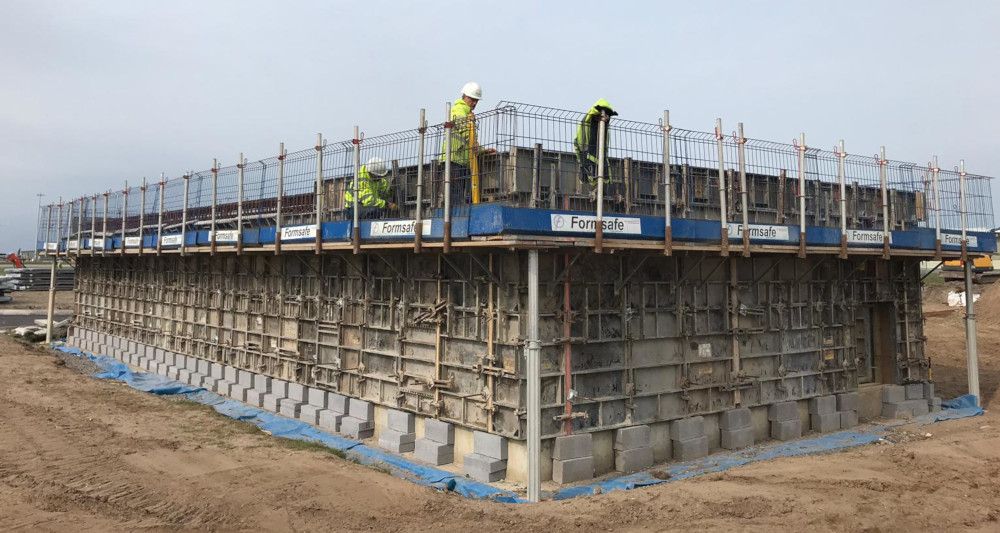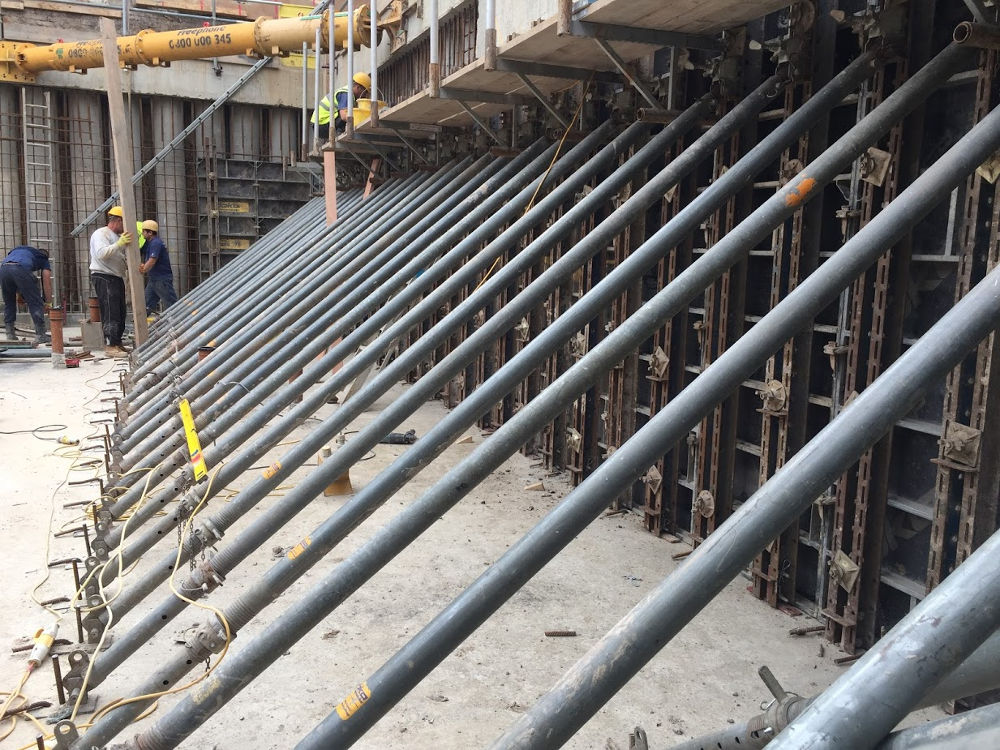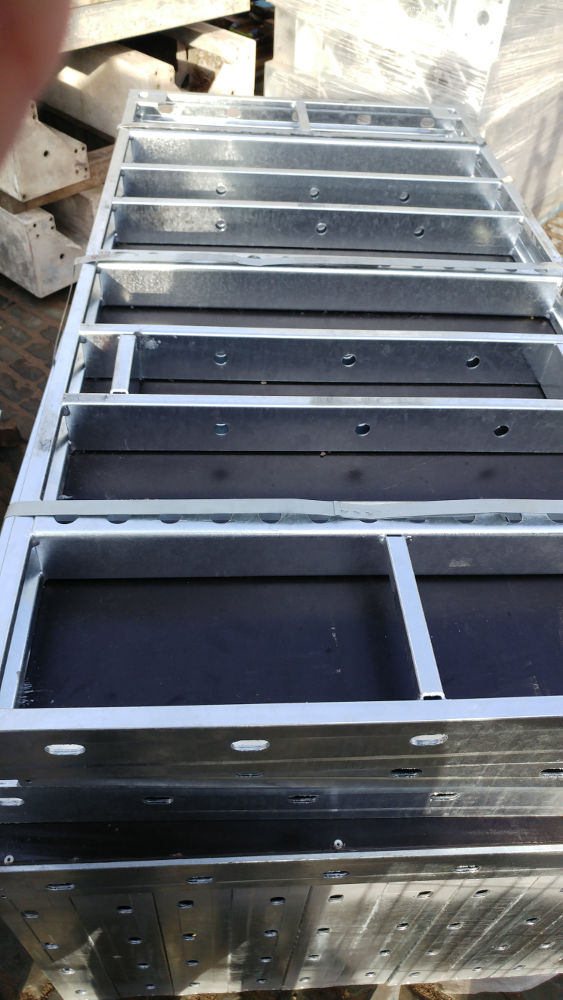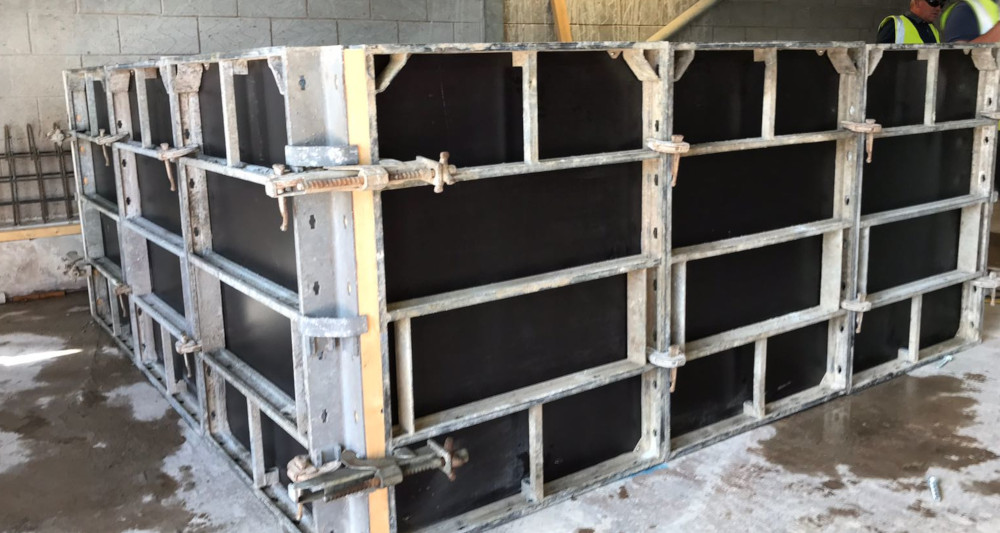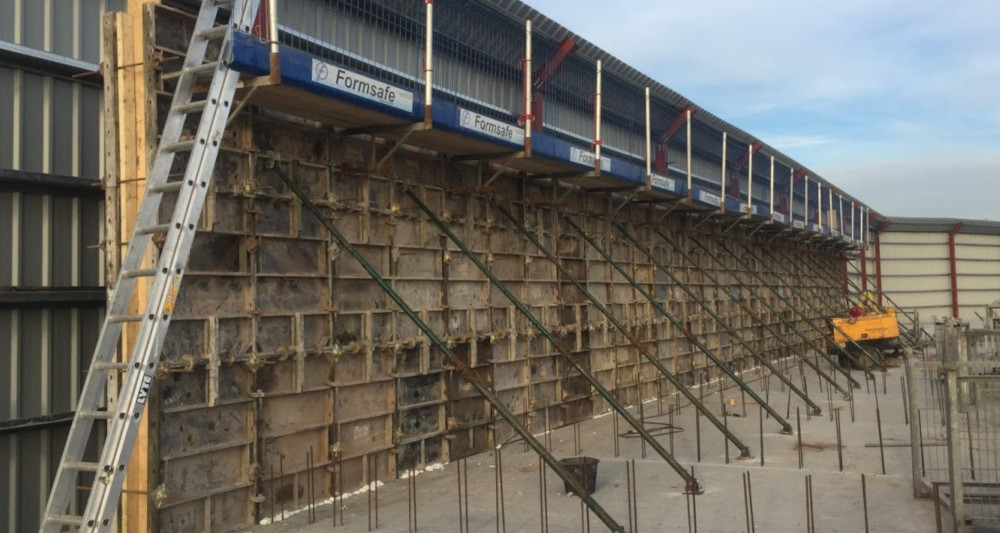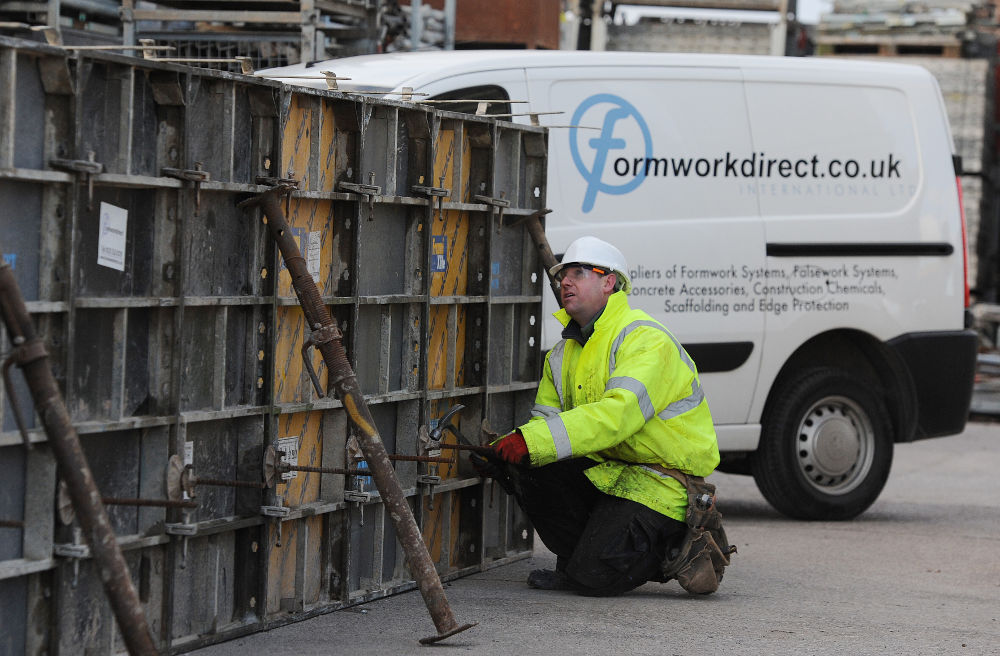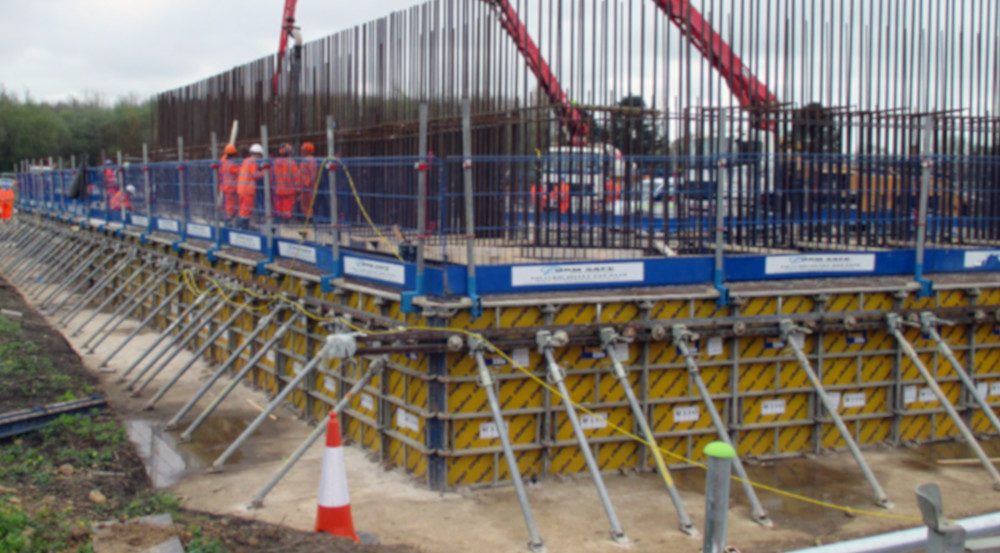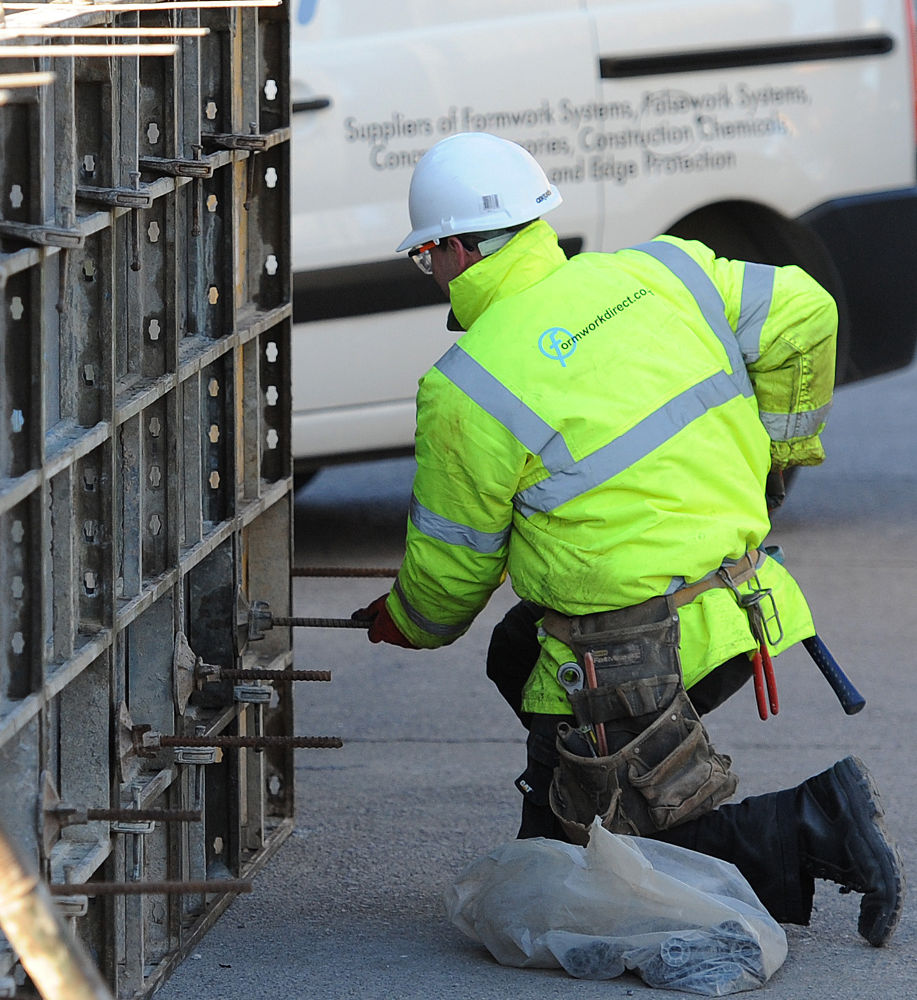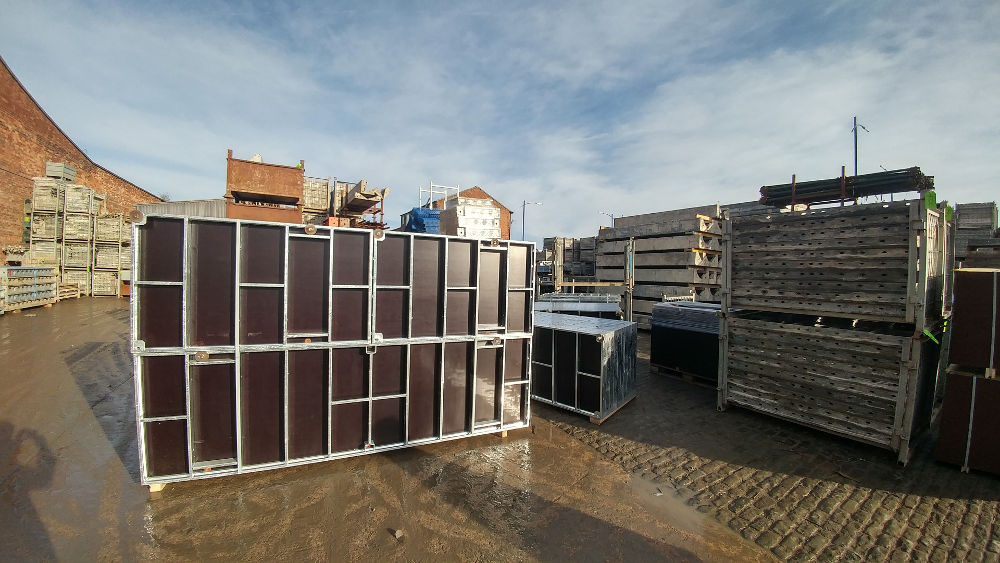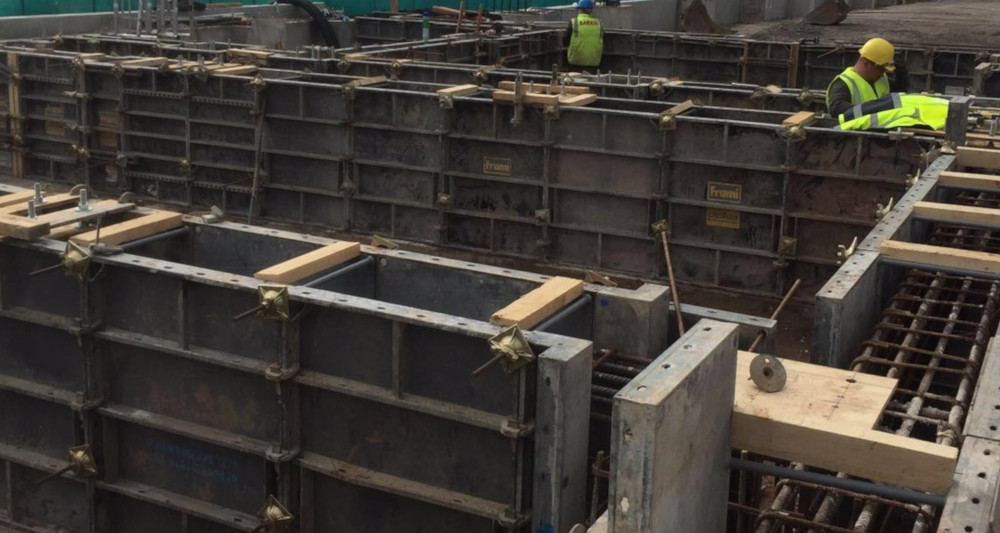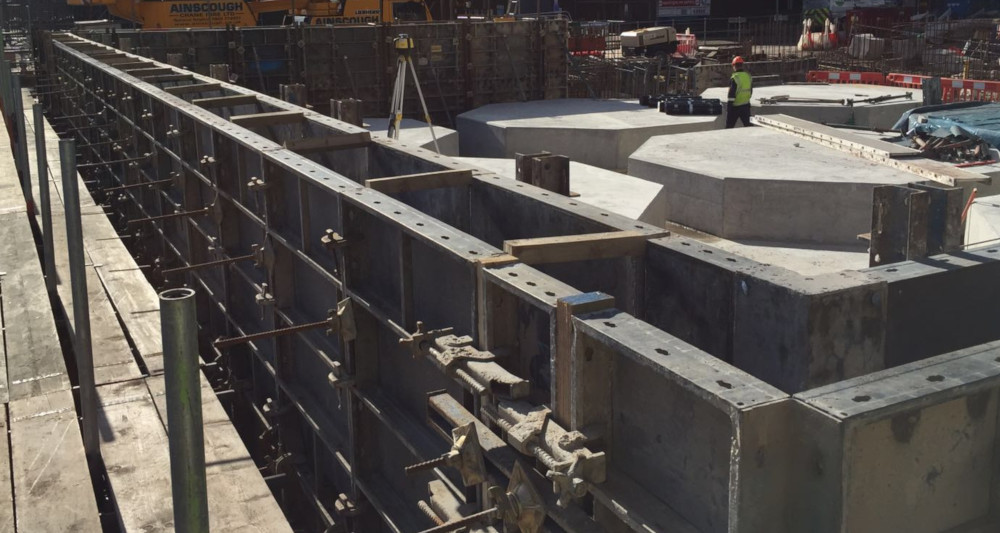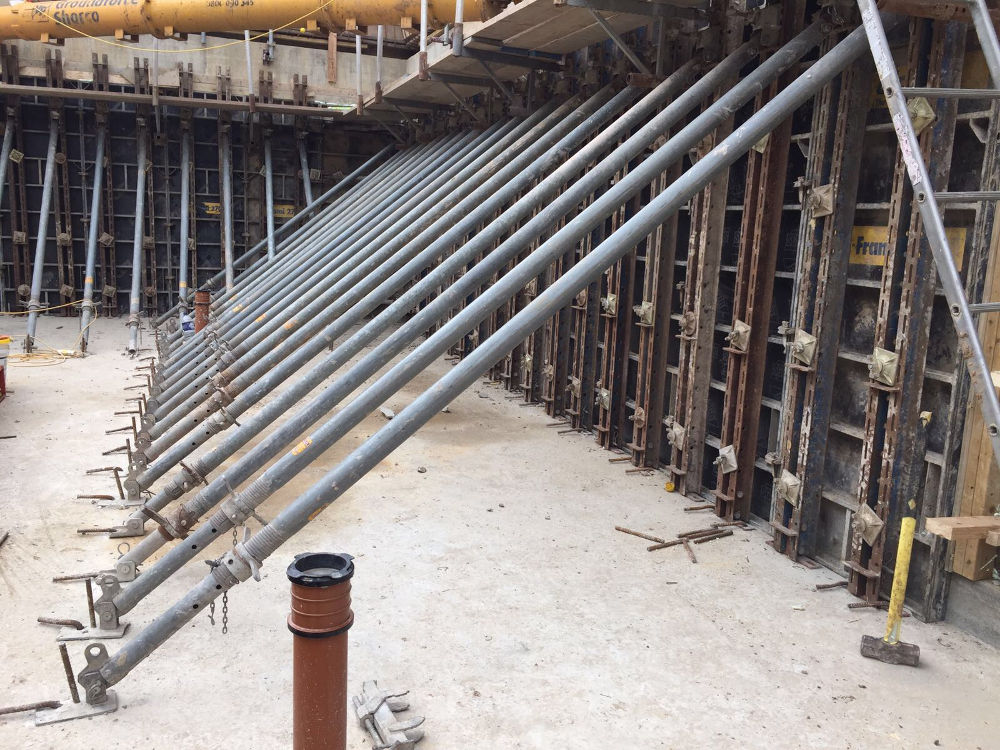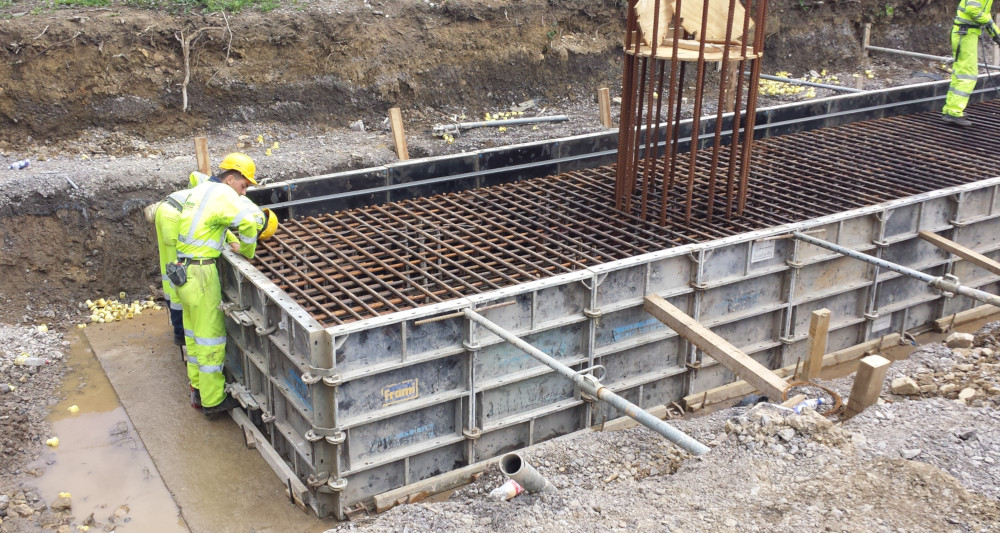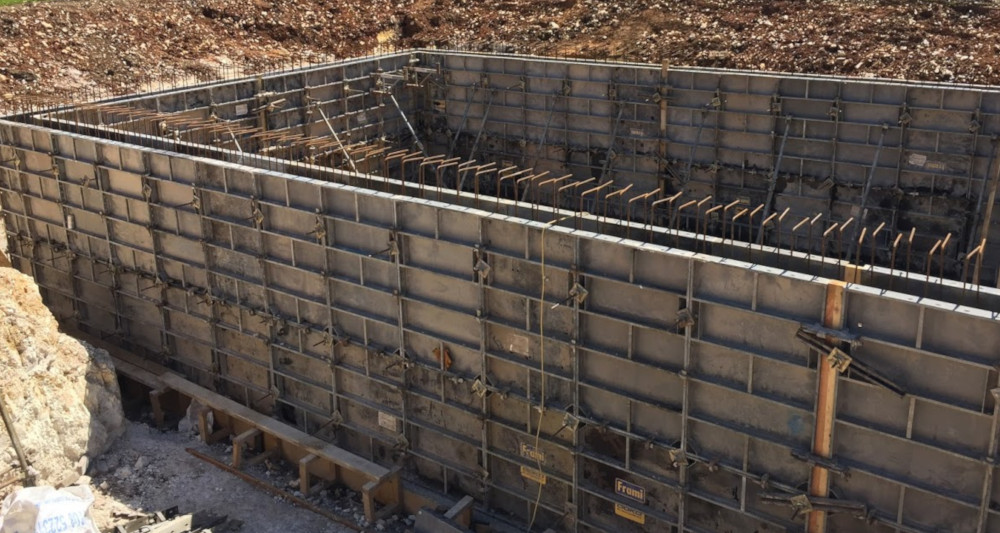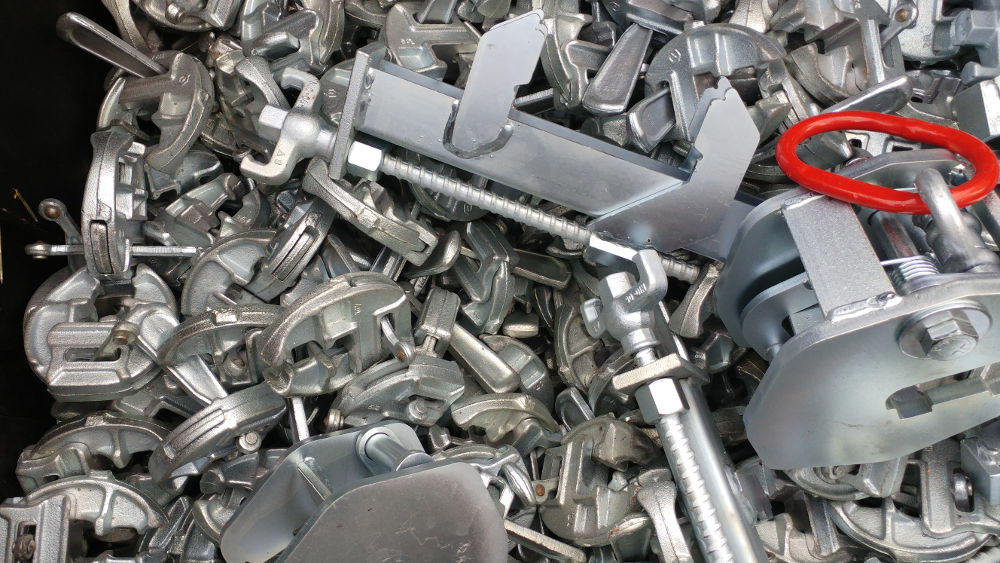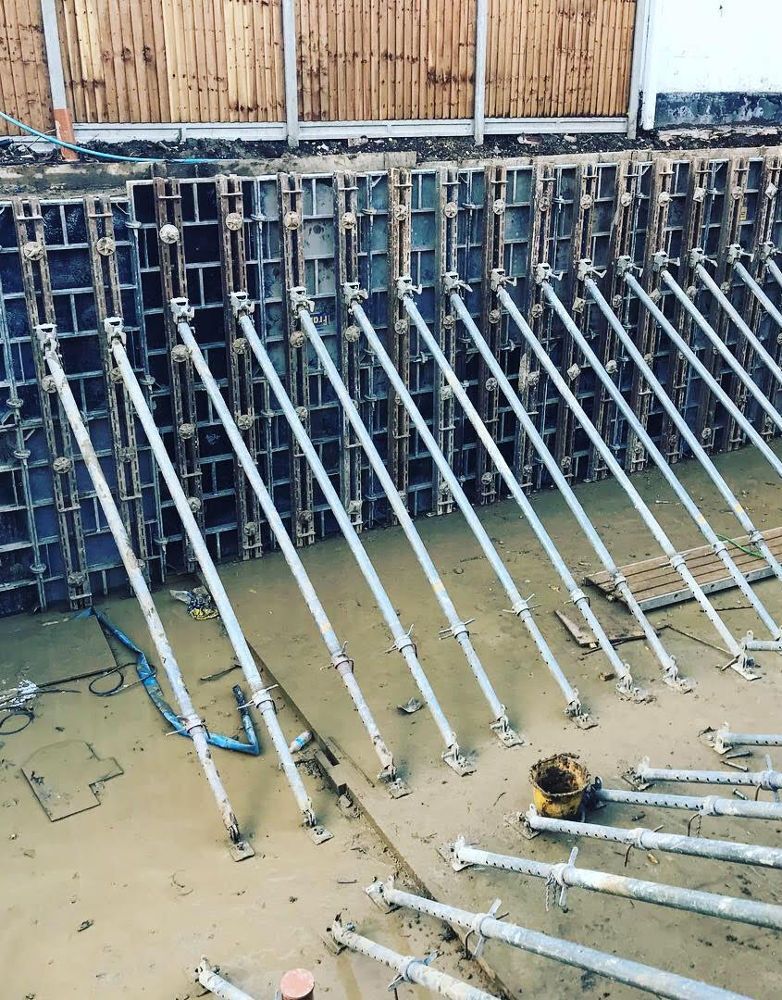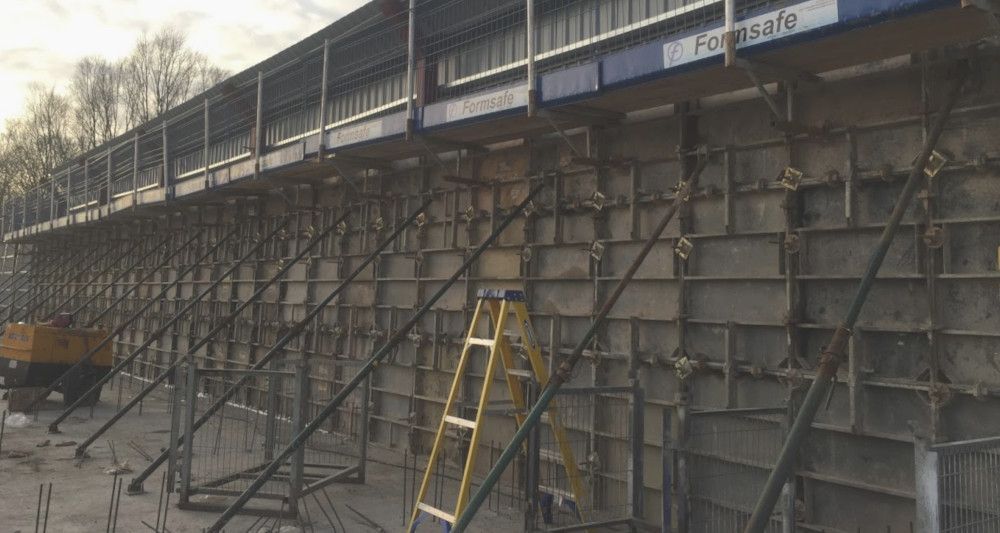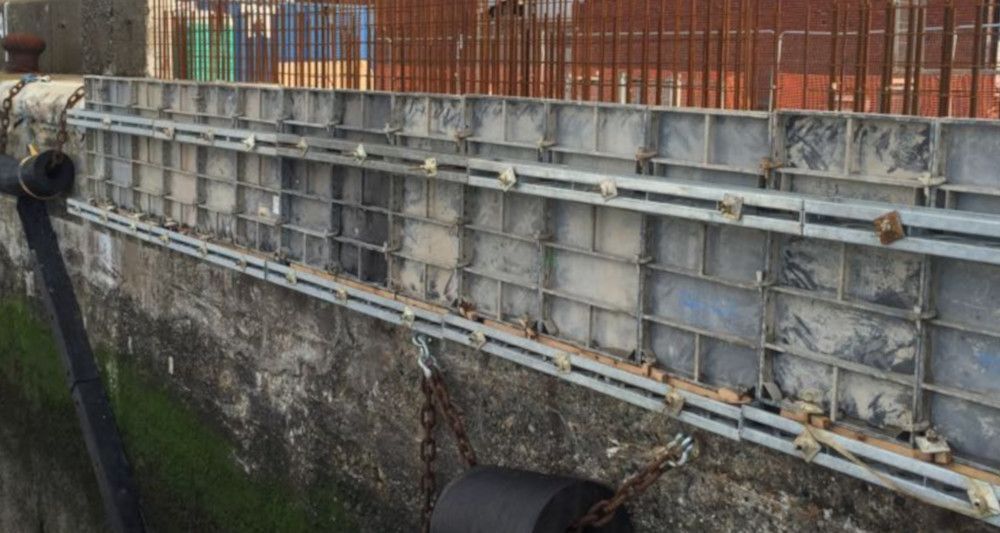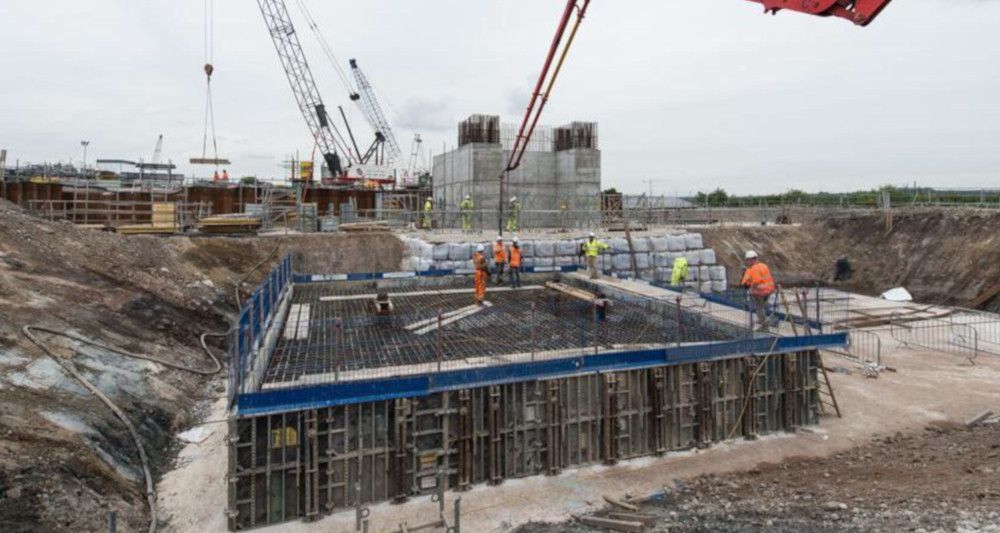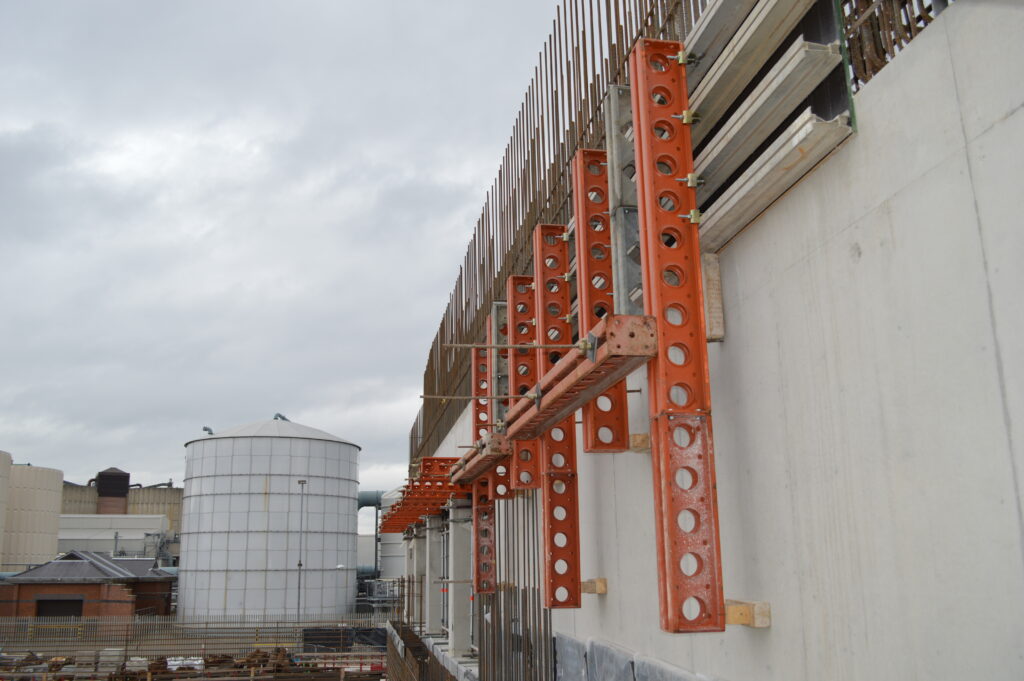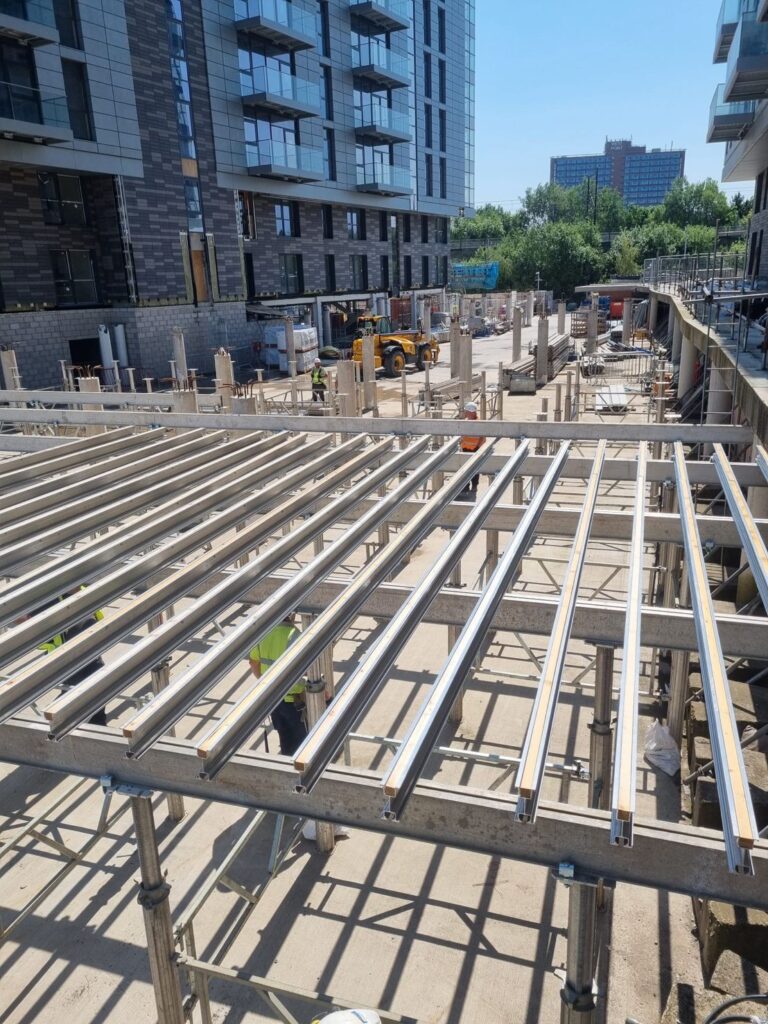Frami Formwork is a lightweight, man handleable formwork system that is perfect for foundations, bases and walls.
The system has a robust galvanized frame and has a safe working load of 50kN/M². Frami Formwork is versatile and flexible, so you can quickly form any layout with it.
The panels can be fixed together at any point around the frame quickly and safely using the Frami clamp. The panels are 1200mm and 1500mm high with a range of fractional widths to form any length of shutter required.
Frami Formwork also takes corners, stop-ends and wall junctions happily in its stride giving the user a perfect, cost saving solution. A range of accessories complete the system providing access platforms, plumbing and stop-end details.
Various applications that Frami Formwork can be utilized for are:
Block Foundation
Any block size can easily be accommodated using Universal Corner Panels and, if necessary, timber inserts. The shutter can either be tied with 15mm through ties or supported externally with walers and props.
Strip Footings
The Frami Panels can be used vertically or horizontally. There are a number of tie options, including flat top ties and a unique foundation assembly which is suited to kickerless construction.
Double Sided
Any desired height and length of structure can be quickly constructed using the appropriate combination of panels. Where timber inserts are required these are held firmly in place by the Frami Adjustable Clamp. Panel joints require a maximum of 2 Frami Clamps to securely hold and align the system.
Single Sided
Using a system of lightweight soldiers and props in combination with a unique holding down bracket, we can cater for single sided applications up to 3.6m high. This system is far quicker to erect than a traditional Steel Soldier shutter and greatly reduces the cost of anchoring the shutter. (Larger single sided solutions utilizing steel soldiers are also available)
Column Formwork
Frami Universal Panels are ideally suited to forming columns. Tie holes spaced at 50mm increments on the back of the 750mm wide panel allow any column cross section up to 650mm x 650mm to be constructed. A maximum of 80kN/m² of concrete pressure is allowed when the system is used in this way.
“Frami Formwork” is a registered Doka GmbH trademark
